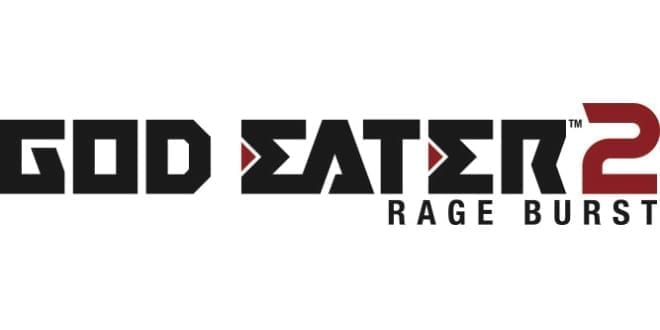Humanity has been pushed to its very limit. They came with such ferocity and without warning. These beasts of unimaginable strength with such a disdain for everything we stand for. We had assumed, for so long, that we were the apex of the food chain, yet they proved us wrong. These predators devoured us, thinning our numbers. The Aragami, known to most as Gods, devastated not only the world's population but also attacked our infrastructure. Governments fell, chaos reigned supreme, and the world was cast into its darkest hour.
However, the flame of humankind isn't so easily snuffed out. The best and brightest among us managed to turn that very destructive force against our aggressors in the form of God Arcs. FENRIR Corporation stepped forward to train soldiers for the task of hunting down these Aragami and taking back our world from the clutch of the beasts. Not only will we destroy these so-called "Gods" but we will devour their forms to power the very weapons used against them. They are known as God Eaters, and they're humanity's last hope.
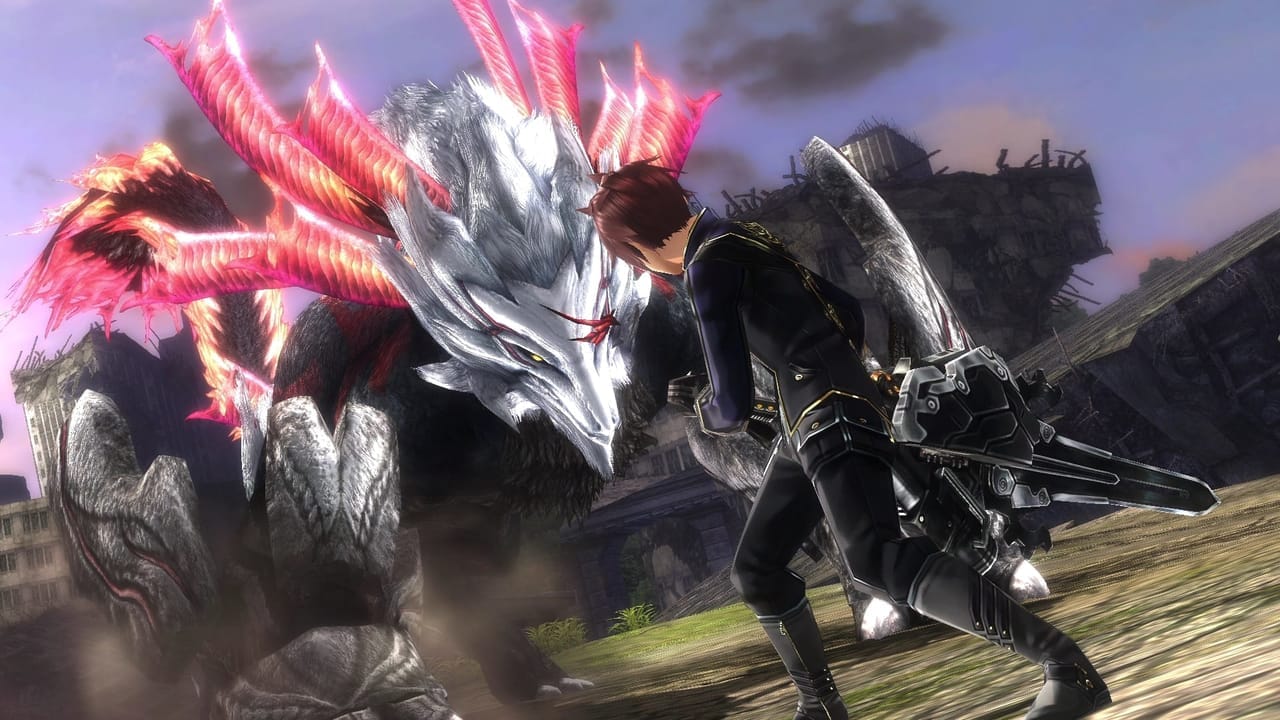
Rage Burst begins three years after the events of Resurrection and the usage of God Eaters against the omnivorous creatures that threaten mankind has netted results. Even with that success, there are multiple threats looming on the horizon. A horrid plague is spreading thanks to the crimson rain falling from the skies, and the Aragami seem to be growing stronger at the behest of new beings known as Psions. These controlling entities also possess the ability to modify Oracle Cells which serve as a key component to power God Arcs. The player is tasked with filling the shoes of the latest recruit to an elite unit of the God Eater corps simply known as "The Blood." This special forces unit, stationed within FENRIR's roving battle fortress, takes on jobs of the utmost urgency and fight against the strongest of Aragami imaginable.
The God Eater franchise is extremely popular in Japan. It has been around since 2010 and it has succeeded despite being a clear imitation of Capcom's Monster Hunter series. The original PlayStation Portable release spawned a prequel OAV, animated series (both from UFOTable), mobile games, light novels, and a collectible card game. The first entry, God Eater, was remade as Gods Eater Burstc later that same year followed by a Fall 2011 release in North America for the PSP. It was remade again in the form of God Eater: Resurrection, which brought the franchise to the West once again. The sequel, originally released in 2013, is finally making its way over in rapid succession following the launch of the first remake of the remake of God Eater. A long road to get the franchise here proper, but those who purchase God Eater 2: Rage Burst physically get the first game, Resurrection, free of charge.
It isn't a surprise to see the series coming over in full-force considering how successful Monster Hunter has been as of late. There have been some alternate hunting games available in the past few years, with titles such as Freedom Wars and Toukiden making waves yet never quite reaching the level of visibility as Capcom's long-running franchise. God Eater, by comparison, is quite similar aside from a few vital areas. Its combat flows with speed and fluidity that stands in stark contrast to the more methodical style of Monster Hunter, and its narrative is far more developed. Rage Burst's apocalyptic tone is offset by numerous light-hearted moments that do an excellent job of preventing the game from getting bogged down by its self-serious story. It wasn't long after diving in, though, that I couldn't shake the feeling that this was eerily similar to Attack on Titan. Replace the Aragami with Titans and the God Eaters with Scouts and you've got an idea of what's in store. The story is a welcome addition, but it takes a little too long to get rolling and, frankly, feels like a slog in the first three to four hours.
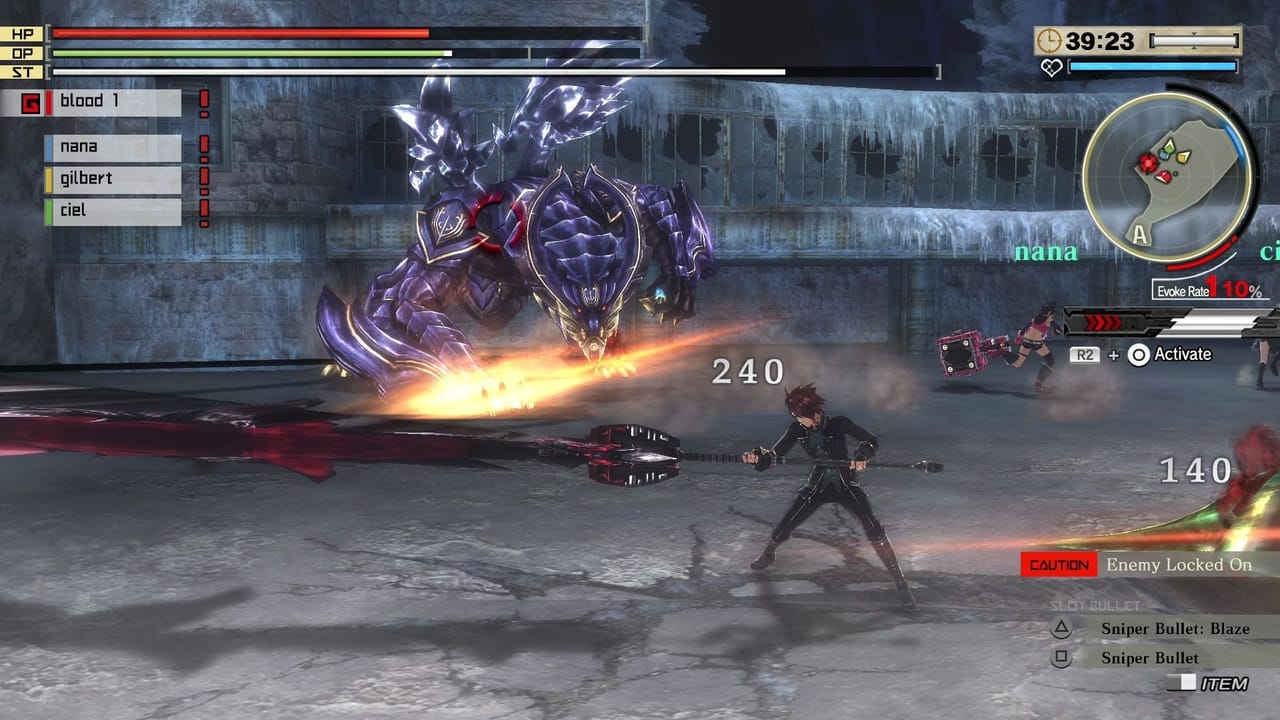
The God Eater series moves at a much faster pace when compared to its counterpart. Combat possesses an arcade-esque feel that is quite fun. Most of that is due to the God Arcs that players wield. They are multipurpose weapons that switch between melee combat, ranged combat and acting as a shield. The God Arcs come in multiple melee variations including a short blade, long blade, spear, hammer and a scythe that is new to Rage Burst. The ranged options are Assault, Sniper, Burst, and Shotgun. All God Arcs, regardless of the foe they're up against, can be turned into a giant hungering mouth that takes a huge bite out of fallen Aragami. This allows for the collection of crafting components and where the real depth of God Eater 2: Rage Burst comes into focus.
This crafting doesn't just allow for the upgrading of weapons and armor but the creation of munitions for ranged fire. Upgrading weapons and systems are fairly straightforward, but it will require some digging through menus and reading a fair amount of text to get a handle on crafting bullets. They come in all sorts of varieties with various elemental/spell effects that will be useful dependent on the foes ahead. This feeds into the strategic approach one must take when taking on missions. The early go of it will likely lull players into a false sense of security regarding difficulty as some of the early missions can be done with little regard to reading into enemy types, their weaknesses and such. Diving into the nuances of combat and crafting, however, makes for a compelling gameplay experience that is quite different from the way Monster Hunter feels.
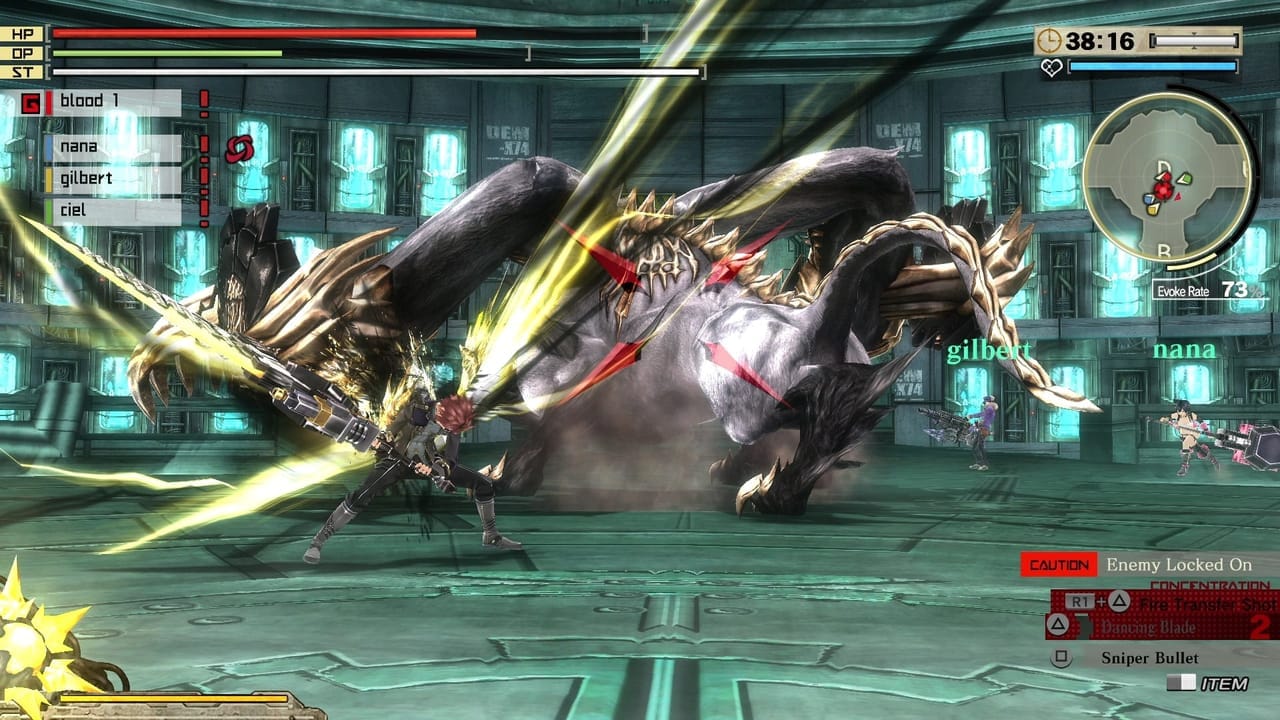
Blood Arts are where the game really shines. These abilities are akin to a talent tree for God Arcs. They can only be acquired by fighting with a weapon variant of choice, initiating chain sequences and fulfilling requirements to "Awaken" (represented by an on-screen gauge) that will allow for passive and active abilities to be applied to weapons. The scythe, for example, has smaller single target damage than some of its counterparts, but Blood Arts help to diminish that gap with added attacks. Some of these passive abilities come in damage boosts or resistances while others add extra attack animations, effects and so on. It adds another level of variance to an already deep system that should add definite replay value for those wanting to see just how far they can push each variant. It rewards players who stick to a particular playstyle while still allowing exploration outside of that choice should a player choose to roam.
There is no shortage of content on supply with God Eater 2: Rage Burst as it will take at least fifty hours of work to get through the main breadth of the game's story. There is far more than that present, and those in search of Platinum trophies will have their work cut out for them. That amount of content is nice, but this game certainly shows its age. This remade version of a PSP/Vita original release features workmanlike graphics that are glossed over with some solid art direction, but many areas show their true nature with some muddy textures along with character models that feel decidedly last-gen. There are, thankfully, no frame rate issues though so playing through all of that content is smooth as silk.
One of the title's smaller flaws (though it proved to be major more than once) was with the camera. Its default position simply isn't the greatest for framing the action. There were more than a few times that I was caught in the midst of a tense battle and found the camera in a bad position, leaving me vulnerable to attacks from behind or the side. I could manipulate it with a few button presses, but when you're so, laser focused on attacking and dashing out of the way it can be a bit too much to deal with all at one time. Once you get accustomed to it and adjust accordingly, it isn't so bad, but it's worth noting.
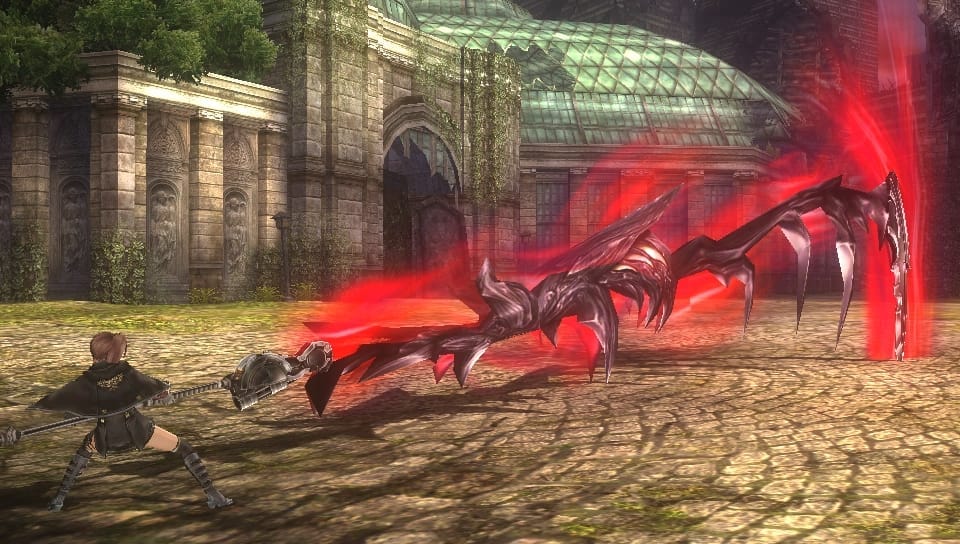
God Eater 2: Rage Burst is a sequel that not only improves upon its predecessor in nearly every way but it stands tall amongst a sea of Monster Hunter clones as one of the few that feels like it has a unique voice. The overall objectives are clearly the same but the journey there couldn't be any different from its counterpart. Hopefully, this will start a trend, along with Toukiden before it, to develop this genre on the console as well as handheld. It was nice to be able to play on the go and settle in for longer sessions with a DualShock 3 (for PlayStation TV usage) in hand. If you're already in for the hunt, then this is a must play.
God Eater 2: Rage Burst was reviewed on PlayStation Vita (along with the PlayStation TV) using a review code provided by the publisher. It is also available for the PlayStation 4 and PC (Affiliate) via Steam.
Review Summary
God Eater 2: Rage Burst sets itself apart from its counterpart, Monster Hunter, with combat that is fluid, fast and fun for a gameplay loop that is addictive. The crafting is deep; the story is engaging, and fans of the genre should pay attention.
(Review Policy)Have a tip, or want to point out something we missed? Leave a Comment or e-mail us at tips@techraptor.net
